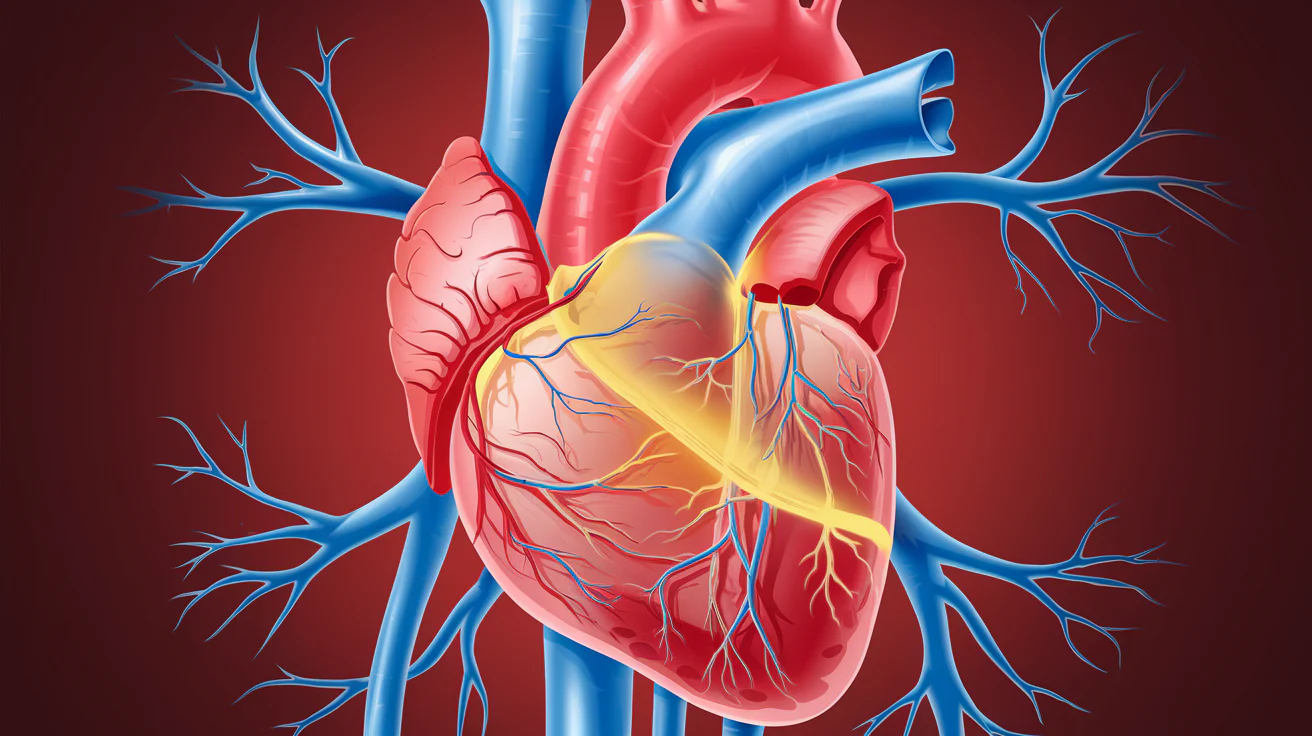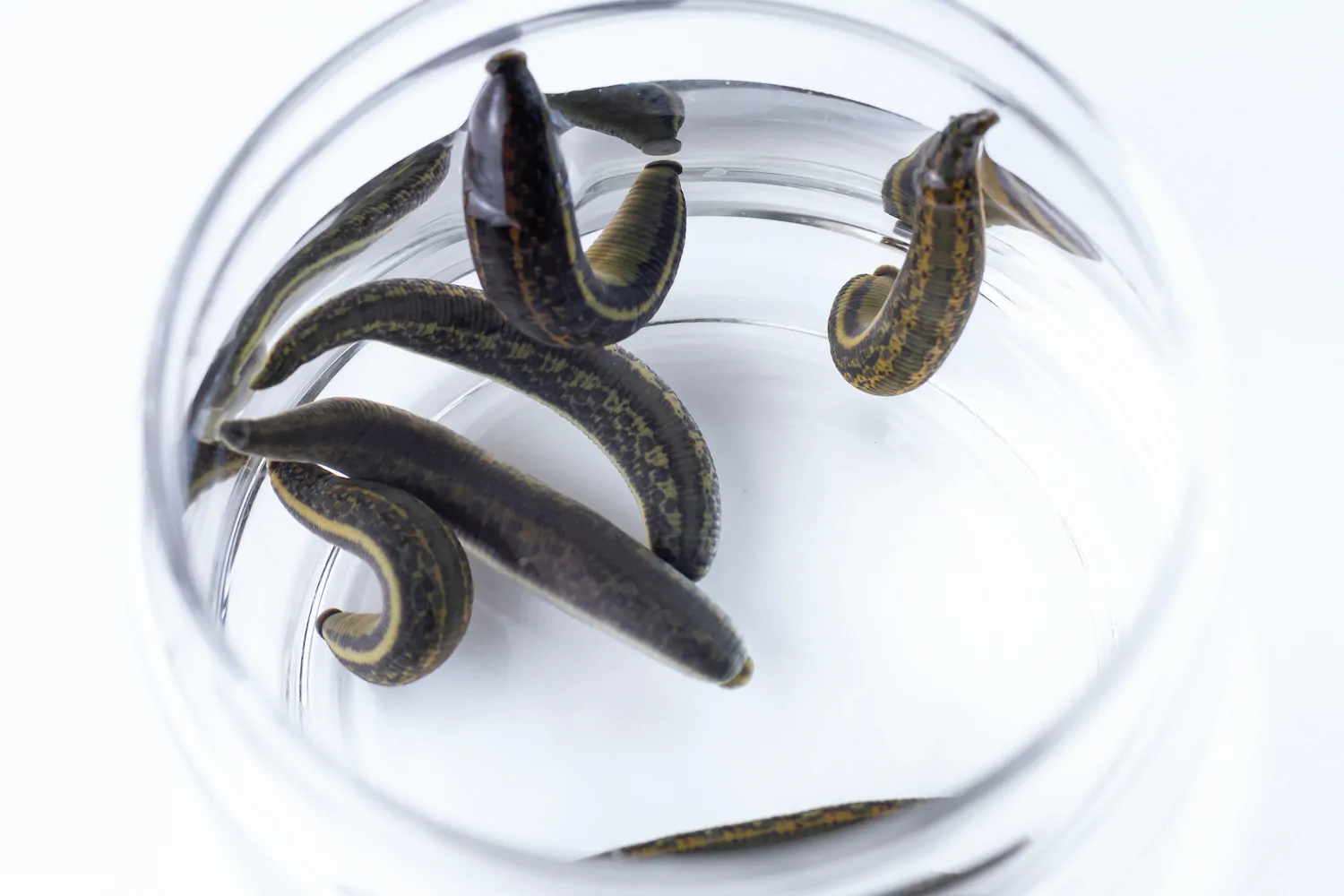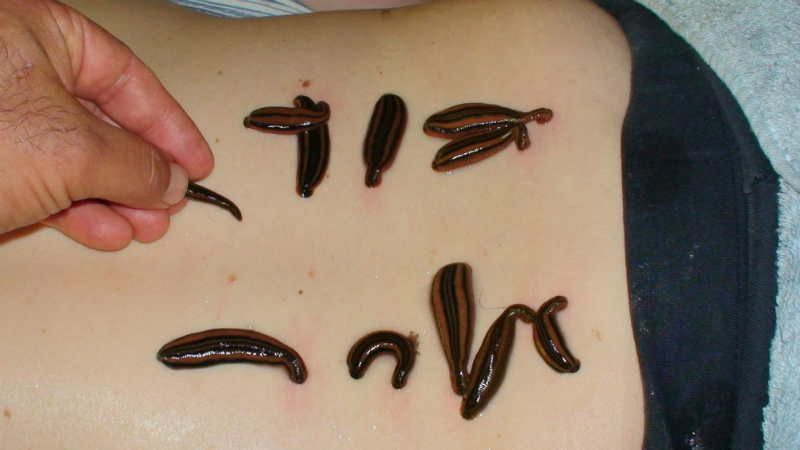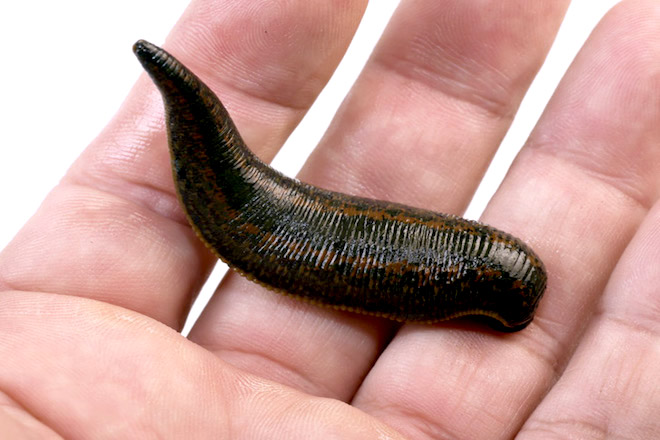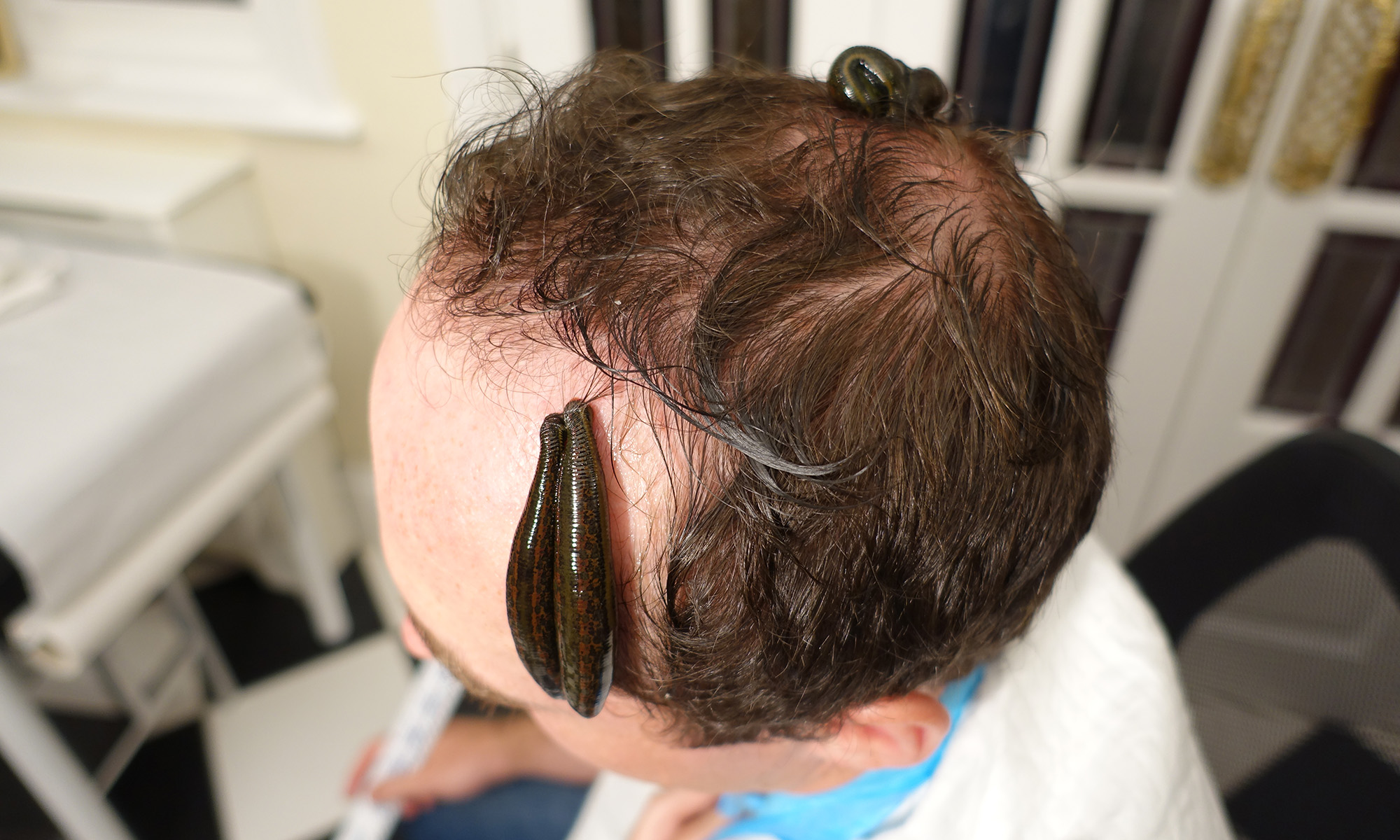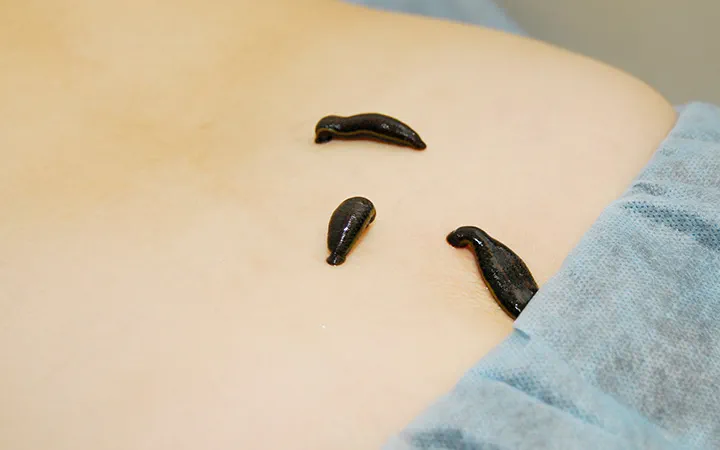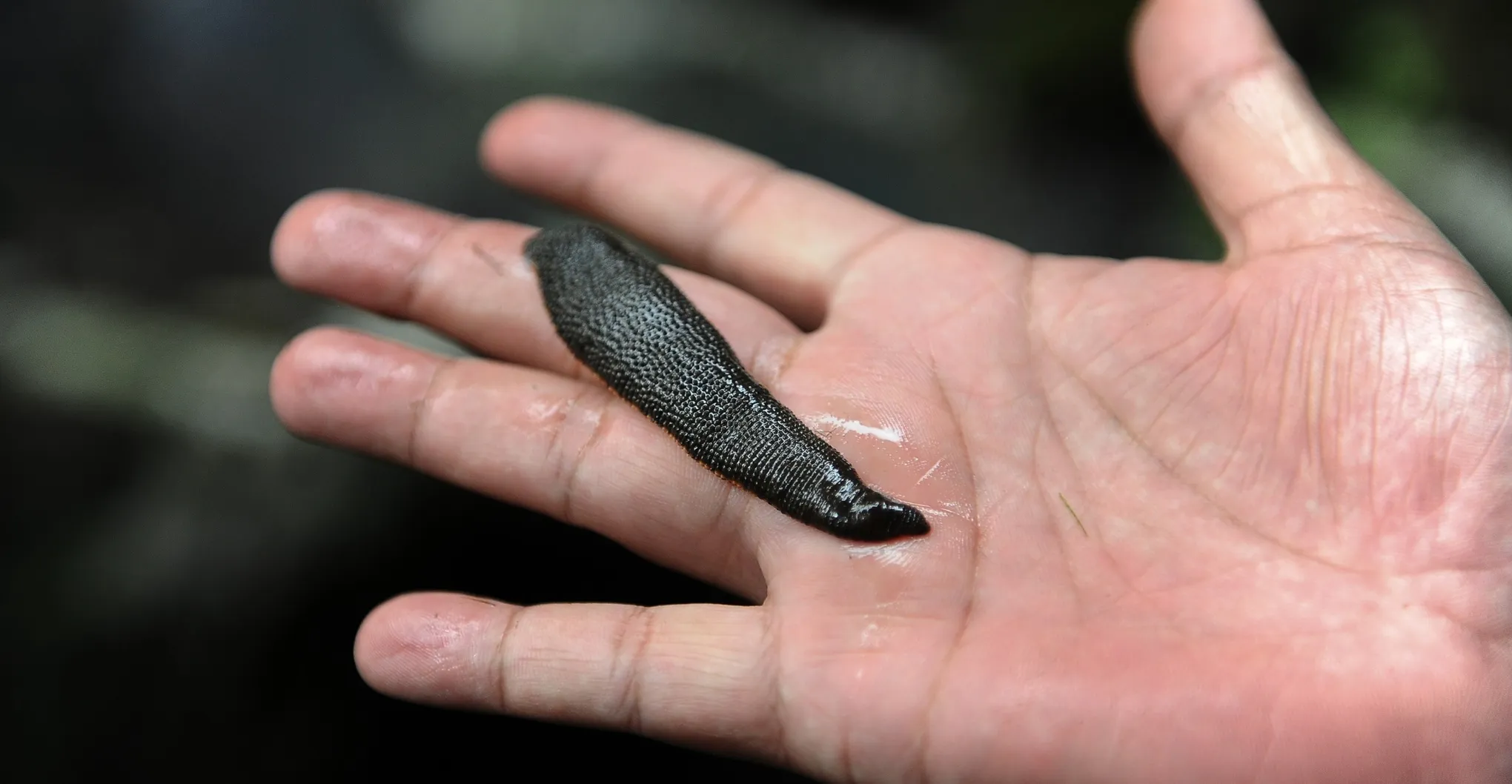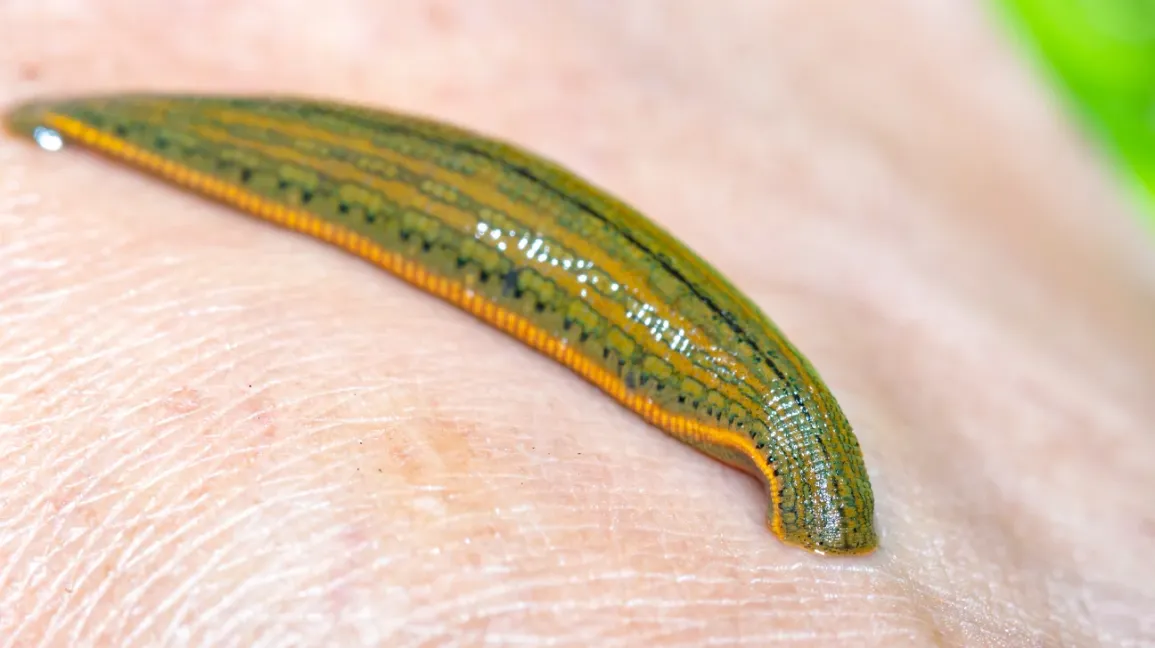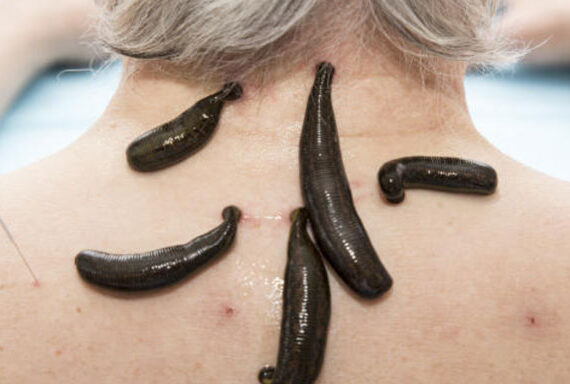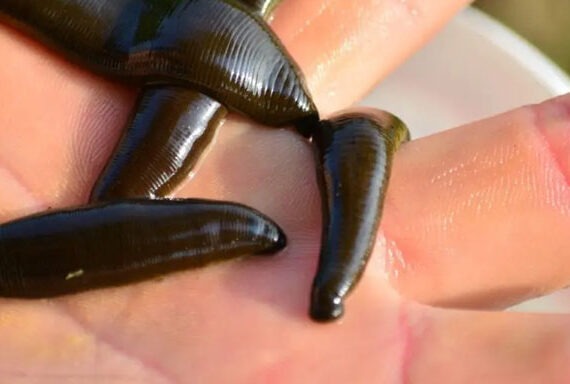Can Leech Therapy Resolve Heart Blockages? Blockages in the heart, resulting from the accumulation of plaque in the arteries, are one of the leading causes of cardiovascular diseases, including heart attacks and strokes. Whereas more mainstream treatments, such as medication, angioplasty or bypass surgery, are used, alternative interventions, such as leech therapy, are being investigated for their potential to boost circulation and improve heart health. But does leech therapy work to eliminate heart blockages? Let’s see what the science says and what the potential is. Understanding Leech Therapy Leech therapy, also called hirudotherapy, is a traditional healing method that uses medicinal leeches to boost blood circulation and reduce inflammation. Medical leeches secrete various chemicals in their saliva, such as: Hirudin: Keeps blood vessels from clotting and promotes circulation. Calin: Inhibits platelet aggregation. Hyaluronidase: Enhances tissue permeability and circulation. They may help to avoid new clots and increase circulation, making leech therapy beneficial to cardiovascular health. How Leech Therapy Could Reduce Heart Blockages Changed Circulation: By thinning the blood and improving circulation, leech therapy prevents blood clots from developing in partially blocked arteries. Anti-Inflammatory Action: Over time, inflammation can lead to plaque build-up in arteries. The anti-inflammatory nature of leech saliva could slow this process down. Decrease in Blood Viscosity: Leech therapy decreases blood thickness, allowing the blood to flow freely through narrowed arteries. Natural Detoxification: Better circulation can help flush toxins and toxins out of your body, which can improve your cardiovascular health. Implications of Leech Therapy for Heart Blockages Leech therapy has many advantages, but is not a substitute for traditional medicine. It may reduce symptoms and increase circulation, but it will not dissolve or dislodge plaque from the arteries. For severe blockages, medical interventions such as angioplasty or bypass surgery are still required. What Happens in a Leech Therapy Session? 1. Courtney: A certified practitioner will diagnose your health condition and determine the appropriateness of leech therapy.2. Session: Medicinal leeches are applied to particular places, in or around the blood vessels that have become engorged.3. Duration: Sessions typically last between 20-60 minutes.4. Post-Care: The bite site is washed and any minor bleeding is controlled with sterile bandages. 1.Will leech therapy permanently eliminate heart blockages? Leech therapy will not break down or remove plaque that is already in the arteries. It promotes circulation and could prevent further obstructions, but should be used as an adjunct therapy. 2.Is leech therapy safe for heart patients? Leech therapy is relatively safe when used under a professional’s supervision. But you need to get your cardiologist on board first. 3.How many sessions will you need to experience the difference? Sessions vary depending on the state of the person. Some might see an increase in blood flow within the first few sessions. 4.Does leech therapy prevent heart attacks? Leech therapy might ameliorate risk factors such as bad circulation and clotting, but it won’t necessarily save you from heart attack. It’s important to stay active and see your doctor. Leech therapy is a gentle, holistic method of increasing circulation and easing inflammation for the heart. But it’s not a stand-alone remedy for unblocking the vessels. Combining leech therapy with a healthy lifestyle and traditional care can improve cardiovascular health. Be sure to ask a healthcare professional for advice before using leech therapy as part of your treatment.
How to Treat a Leech Bite: Home Remedies and Medical Care
How to Treat a Leech Bite: Home Remedies and Medical Treatment Leech bites are usually not painful, and they typically come during an intended therapy. But whether you encounter a leech in the wild or in therapy, you need to take care of it properly to avoid pain or infection. Here is what you need to know about how to deal with a leech bite at home, and when you need to take it to the doctor. What Happens After A Leech Bite? When a leech attaches to your skin, it pierces the skin with its tiny teeth and eats blood. A leech’s saliva is a source of anticoagulants that keep blood from clotting and anesthetics that alleviate pain. Once the leech comes free, the wound can bleed for hours on end from these anticoagulants. Home Remedies for a Leech Bite Infection. Remove the Leech Safely- Don’t pull the leech off because its mouth will stick to your skin, putting you at increased risk for infection. Slide a flat object such as a credit card under the leech’s mouth to remove it. Alternatively, sprinkle salt, vinegar or lemon juice close to the leech to cause it to disengage. 2. Clean the Bite Area Clean the bite area with soap and water to eliminate remaining saliva or debris. Dry the skin with a towel. 3. Stop the Bleeding Pressure the area with a fresh gauze or towel to stop the bleeding. Cover the wound with a clean bandage and apply pressure if bleeding continues. 4. Prevent Infection Dab the bite with an antiseptic cream or ointment. Rinse the area clean and dry to avoid bacterial contamination. 5. Reduce Itching and Swelling Apply over-the-counter hydrocortisone cream or an antihistamine to prevent itching and swelling. Applying a cold compress also relieves irritation. How to Get Medical Treatment? Although most leech bites are benign, get yourself to a doctor if: – The bleeding does not end after hours. Infection is seen with redness, heat, swelling or pus. You develop an allergic reaction, such as breathing difficulties, hives or excessive swelling. The leech’s teeth are still stuck into the skin. You are ill or feverish after being bitten. Preventing Leech Bites in the Wild. Wear long sleeves, pants, and leech socks when you’re visiting leech sites. Use DEET insect repellents on exposed skin. Don’t go swimming in ice-cold water or through weedy patches where leeches exist. 1.Can leech bites transmit diseases? Leeches typically do not transmit disease to humans, but bites can get infected if left unwashed. 2.How long does it take for a leech bite to heal? The majority of leech bites subside within a week, although you might experience some scarring or discoloration. 3.What if the leech’s head remains in the cavity? Seek medical attention so the head can be safely shaved off to prevent infection. 4.Are leech bites dangerous? Leech bites are 99% harmless, although infections or allergic reactions can occur in very rare circumstances. Leech bites can be treated with proper treatment and precautions. If you follow these guidelines, you can get back to work quickly without the danger of complications. If you’re not sure, seek help and treatment from a doctor.
How Leech Therapy Supports Heart Health and Clears Blockages
Why Leech Therapy Promotes Good Heart Health and Dissolves Blockages. The heart is an essential part of a healthy body, and our modern lifestyle tends to cause heart problems including blockages and poor circulation. While mainstream treatments such as drugs and surgery are common, complementary therapies are on the rise for their natural side effects. Leech therapy, for instance, is an old practice that has been proven to improve cardiovascular health and reduce arterial blockages. The Science Of Leech Therapy. Medical leeches, called hirudotherapy, are administered to circulate and ease inflammation. When a leech is attached to the skin, it secretes bioactive molecules, such as: Hirudin: Strong anticoagulant that keeps the blood from clotting.Calin: A substance that slows down platelet aggregation.A hormone that increases permeability of tissue and increases blood flow. These chemicals dissolve clots, reduce swelling, and increase blood flow, making leech therapy an ideal alternative to heart surgery. Leech Therapy For Heart Health Benefits 1. More Healthy Circulation: Leech Therapy maintains healthy circulation, which reduces the chances of arterial congestion. 2.Clotting Prevention: Leech saliva’s anticoagulant action helps stop blood clots from forming and leading to heart attack or stroke. 3.Lowered Inflammation: Chronic inflammation is a major cause of heart disease. Leech therapy’s anti-inflammatory properties can counter this risk. 4. Detoxification: Through increased circulation, leech therapy facilitates elimination of toxins from the body, and promotes cardiovascular wellness. What to Expect from a Leech Therapy Session? A certified expert will place medicinal leeches into specific regions of your body (often near damaged blood vessels). This treatment typically takes 20-60 minutes, with the leeches sucking a little blood and secreting their chemicals. Post-op care involves wiping the area and watching for mild swelling or redness that typically passes easily. Who Should Consider Leech Therapy? Leech therapy can help those who have: Atherosclerosis (clogging of the arteries) Poor circulation Chronic venous insufficiency Hypertension (high blood pressure) Risk of blood clots But you must always see a doctor before taking leech therapy, particularly if you’re anemic, have bleeding problems, or take blood-thinning medication. 1.Is leech therapy safe for cardiac patients? Yes, leech therapy, when performed by an expert, is safe and can be used in addition to conventional medicine. Before starting therapy, check with your doctor. 2.How many sessions does it take to see a change? Sessions vary from person to person based on the individual’s state. Some may improve after a few sessions, while others may need continual therapy. 3.Does leech therapy hurt? Leech bites resemble a minor pinch, and their saliva is anesthetic, making it as painless as possible. 4.Can leech therapy be used to remove arterial blockages entirely? By promoting more circulation and avoiding the development of clots, leech therapy can help reduce the number of blockages. But it doesn’t replace interventions such as angioplasty or surgery. 5.Who should avoid leech therapy? Patients suffering from anemia, active infections or bleeding disorders and pregnant women should not take leech therapy unless directed by a physician. Leech therapy offers an attractive alternative for improving the health of the heart and treating blockages. While not intended to replace treatment, it can serve as a complementary remedy. Leech therapy provides a noninvasive way to get cardiovascular health by improving circulation, decreasing inflammation, and preventing clots.
Hirudotherapy Explained: A Natural Path to Better Health
Hirudotherapy, A Step-by-Step Guide to Health Hirudotherapy, or leech therapy, is a very old and very popular healing modality used for various ailments. Utilizing medicinal leeches for their healing potential, it offers a natural alternative for anyone in search of a non-surgical solution to their wellness. Let’s explore what makes hirudotherapy a promising health possibility. What is Hirudotherapy? Aside from its medicinal applications, the practice of hirudotherapy relies on the carefully controlled use of medicinal leeches (Hirudo medicinalis) to remedy various health conditions. In this way, the leeches dissipate a specific mix of bioactive compounds, such as hirudin, into the bloodstream during treatment. Hirudin is an herbal anticoagulant which helps to speed up the blood flow and heal the affected skin. Benefits of Hirudotherapy 1. Better Circulation: Hirudotherapy promotes circulation by preventing clots and venous congestion.2. Pain Relief: Leeches saliva contains natural anesthetics and anti-inflammatory compounds that alleviate pain and swelling.3.Detoxification: This treatment helps the body to detoxify by boosting the flow of lymphatic water and removing waste products.4. Skin Rejuvenation: Hirudotherapy is frequently applied in cosmetic medicine to fade wrinkles, scars, and other skin flaws.5. Counselling For Chronic Diseases: Arthritis, varicose veins, heart ailments can all benefit from leech therapy’s anti-inflammatory and blood thinning effects. Common Applications of Hirudotherapy Vascular Health: Management of varicose veins, thrombosis, and venous insufficiency.Skin Care: Control of acne, eczema, and graft survival. Anti-Pain Therapy: For migraines, arthritis, and joint pain.Perinatal Care: Infertility, pelvic inflammatory disease, and oestrogen disorders.Post-Surgical Recovery: Facilitates healing and minimizes complications in reconstructive surgeries. What to Expect from a Hirudotherapy Treatment? Sessions are generally between 30 and 90 minutes, depending on the condition you’re treating. The therapist imprints therapeutic leeches onto particular body parts. As soon as they become attached, the leeches draw blood and secrete their healing saliva. It is typically painless and the leeches drop off as they are fed. This site may bleed for a few hours after treatment, which is normal during detoxification. Is Hirudotherapy Safe? Hirudotherapy is considered safe when administered by licensed practitioners. The medicinal leeches they use are raised in sterile conditions to minimise infection. But make sure to speak to a doctor to ensure that the therapy is the right treatment for your specific medical condition. 1. Does hirudotherapy hurt? Hirudotherapy is generally painless. Natural anaesthetics are found in the leech’s saliva, which means the vast majority of patients experience little more than a slight tingle during the operation. 2. Are there any side effects? The common side effects include mild swelling, redness, and itching at the application site. These symptoms typically wear off within a few days. No life-threatening complications occur when professional care is given. 3. How many sessions are needed? Sessions vary based on the condition being managed. Sometimes things can be treated in a single or two sessions, and some might require a course of treatments lasting weeks or months. 4. Who should avoid hirudotherapy? Patients who have bleeding disorders, severe anemia, or allergies to leech saliva should not undergo this treatment. Hirudotherapy should not be used by pregnant women and those taking blood-thinning drugs without talking to their doctor. The concept of hirudotherapy presents an intriguing hybrid of ancient knowledge and contemporary research. In treating a wide array of conditions in a natural and efficient manner, it’s being increasingly sought after by people who are looking for a whole person. If you’re interested in trying out this treatment, check with a trained professional to see if it’s right for you.
Hair Growth with Leech Therapy: A Holistic Approach
Leech therapy is a traditional practice from antiquity that has become increasingly popular for its efficacious applications in ailments ranging from baldness to cardiovascular disease. Because it promotes circulation, cleanses the system, and aids in healing, leech therapy has come to be regarded as a total hair remedy. In this article, we discuss the use of leech therapy to help you get your hair growing, what it’s used for, and how it can be a part of your natural hair care regimen. What is Leech Therapy? Leech therapy involves using medicinal leeches (Hirudo medicinalis) to treat various diseases. The leeches are spread to specific places on the body, attaching themselves to the skin and secreting saliva that contains beneficial enzymes and proteins. These substances increase circulation, ease inflammation and stimulate healing. Leech therapy for hair growth aims at increasing scalp circulation which is necessary for the growth of healthy hair follicles. The therapy is sometimes applied as an adjunct to other remedies, such as the application of topical hair growth treatments or nutritional changes. How Does Leech Therapy Increase Hair Growth? Increased Circulation: One of the major ways leech therapy promotes hair growth is by increasing blood flow to the scalp. A leech stuck to the skin releases substances that constrict blood vessels and increase circulation to hair follicles. Increased circulation means more oxygen and nutrients reach the hair follicles which may promote hair growth. Detoxification: Leech therapy is known to detoxify the body. Saliva from the leech contains hirudin, an anticoagulant that clots blood and draws poisons from the body. Through encouraging a healthy lifestyle and breaking down the blockages inside, leech therapy can indirectly aid the optimal environment for hair growth. Alleviation of Inflammation: Inflammation is a major reason behind hair loss, particularly when it comes to alopecia. Leech therapy’s anti-inflammatory action minimizes scalp irritation, swelling, and inflammation that improves hair follicle health and hair regrowth. Hair Follicles Induction: The pumped blood and the cleansing effect may awaken dead hair follicles and prompt them to come alive and start growing new hair. Also, leech therapy may reinforce the hair you already have, providing nutrients to the follicles. What’s The Use Of Leech For Growing Hair? Treatment is Non-Invasive: Unlike other hair restoration procedures, leech therapy is non-invasive and causes less side effects when performed correctly. Natural and Holistic: Leech therapy is a natural treatment that integrates into the body’s natural healing process and therefore is suitable for people seeking holistic solutions. As an Add-on Therapy: Leech therapy may be combined with other hair growth products like hair serums or essential oils to maximize the results. How To Apply Leech Therapy To Increase Hair Growth? Leech Therapy to grow hair should only be used by a professional, and the process must be safe and effective. Leeches are normally rubbed into the scalp for a short time (usually 20-30 minutes). The therapist will track the procedure to make sure that the leeches are effective and that the treatment is well tolerated. 1. Is leech therapy safe for hair growth? Leech therapy is generally considered safe when performed by a trained and licensed professional. It’s important to ensure that the leeches used are medicinal-grade and that proper hygiene is maintained to avoid infection. 2. How many sessions of leech therapy are needed for hair growth? The number of sessions required can vary depending on individual hair loss conditions. Typically, several sessions (usually 5-10) spaced a few weeks apart are recommended for noticeable results. However, some individuals may see improvement with fewer treatments. 3. Can leech therapy work for all types of hair loss? Leech therapy can be beneficial for various types of hair loss, including androgenic alopecia (male and female pattern baldness), alopecia areata, and general thinning. However, its effectiveness may vary based on the severity and underlying cause of hair loss. 4. Are there any side effects of leech therapy for hair growth? While leech therapy is generally safe, some individuals may experience mild side effects, such as minor bruising or irritation at the treatment site. Rarely, there may be more serious complications, which is why it’s crucial to seek treatment from a certified professional. 5. How long does it take to see results from leech therapy? Results from leech therapy can vary. Some people may notice improvements in hair thickness and texture within a few weeks, while for others, it may take a few months to see visible hair growth. Consistency is key, and the therapy should be part of a comprehensive hair care routine. Conclusion Leech therapy offers a unique, natural approach to promoting hair growth. By improving circulation, detoxifying the body, and reducing inflammation, leech therapy can help revitalize hair follicles and encourage new hair growth. As a non-invasive and holistic treatment, it’s an excellent option for those seeking alternative solutions for hair loss. If you’re considering leech therapy, consult with a trained professional to determine if it’s the right option for you.
Exploring the Medical Value of Leech Therapy
Leech therapy, though ancient, is a key component of contemporary medicine. From traditional use to cutting edge treatment, leeches provide a safe and natural solution to many health issues. This blog examines the medical importance of leech therapy, its mechanics, and its multiple uses in healthcare. 1. What Is Leech Therapy? Leech therapy uses medicinal leeches (most often Hirudo medicinalis) to cure many illnesses. These leeches are raised in sterilized conditions to make them safe and efficient. They have a unique blend of bioactives, such as anticoagulants, vasodilators and anaesthetics, in their saliva, which lends itself to use in medicine. 2. Key Applications of Leech Therapy Reconstructive and Plastic Surgery: Leeches are frequently used to increase blood flow in newly reattached organs and skin grafts and reduce tissue death. Venous Congestion: Leech treatment can relieve post-surgical swelling or congestion and encourage the flow of blood. Hematoma & Swelling Control: Leeches alleviates local swelling and excess blood flow in such hematomas. Arthritis and Joint Pain: Some experiments show that leech therapy can reduce osteoarthritis pain and inflammation. Cardiovascular Support: The anticoagulant activity of leeches can help treat certain cardiovascular disorders. 3. How Leech Therapy Works Once sprayed on, a leech attaches itself and feeds on blood. In doing so, it secretes saliva containing: Anticoagulants: Keep blood from clotting and keep blood pressure steady. Vasodilators: Broaden blood vessels to promote circulation. Anaesthesia: Avoid any discomfort while doing so. These oils restore circulation, minimize swelling, and accelerate recovery in the wound. 4. Benefits of Leech Therapy Improves blood circulation and oxygenation to tissues. Lowers the chance of blood clots and tissue death. Offers an all-natural, non-surgical treatment. Facilitates recovery times after surgical and non-surgical procedures. 5. Potential Risks and Precautions Leech therapy, if administered by qualified professionals, is relatively safe but there are some risks: Viral infections: Very rare, if not maintained in good condition. Persistent Bleeding: The anticoagulants present in leech saliva tend to keep the bleeding going longer than normal. Sensitivity To Leech Saliva: Some people are sensitive to leech saliva. Leech therapy should be administered with professional supervision to maintain safety and efficacy. Q1: What conditions can leech therapy treat? Leech therapy is effective for venous congestion, hematomas, arthritis, cardiovascular issues, and as a supportive treatment in reconstructive surgeries. Q2: Is leech therapy painful? Most patients experience minimal discomfort due to the anesthetic properties of leech saliva. Q3: How long does a leech therapy session take? Sessions typically last between 20 to 45 minutes, depending on the condition being treated. Q4: Is leech therapy suitable for everyone? Leech therapy is not recommended for individuals with certain medical conditions, such as hemophilia or severe anemia. A healthcare provider should evaluate suitability. Q5: How does leech therapy complement modern medicine? Leech therapy supports healing in surgeries, improves blood flow, and provides relief in chronic conditions, making it a valuable complementary treatment. Leech therapy bridges the gap between traditional remedies and modern medical practices, offering unique benefits for various health challenges. With proper supervision and application, it remains a safe and effective option in today’s healthcare landscape.
Everything You Need to Know About Medical Leeches in Healthcare
Medical leeches have been used as medical tools for centuries and their use keeps changing as medicine evolves. From ancient bloodletting to advanced microsurgery, leeches were invaluable healing partners. We explore what medical leeches have to do with health, their uses, and their utility. 1. What Are Medical Leeches? Medical leeches, most commonly the Hirudo medicinalis species, are raised and sterilised for use as medical reptiles. These leeches carry specific saliva enriched with anticoagulants, vasodilators and anaesthetics, making them particularly effective in medicine. 2. Applications of Medical Leeches Reattachment Surgery: Leeches are employed during reconstructive procedures to increase blood circulation in reattached body structures like fingers, ears, or limbs. The anticoagulant qualities of their saliva help to keep blood from clotting. Venous congestion treatment: When venous congestion is treated by surgery, leeches are rubbed into swollen regions to draw out excess blood and increase blood flow. Hematoma Therapy: Leeches can remove hematoma swelling and blood pooling. Plastic and Reconstructive Surgery: Physicians administer leeches to promote healing during delicate surgeries, such as skin grafts and flaps. Supportive Therapy: Leech therapy is sometimes used to facilitate treatment of osteoarthritis, cardiovascular disease, even infertility. 3. How Leech Therapy Works If placed on the skin, a medical leech seizes and starts to pull blood. It secretes saliva, rich in bioactive molecules, during the feeding process that: Prevent blood clotting (anticoagulants). Dilate blood vessels (vasodilators). Numb the bite area (anesthetics). It provides continual circulation, reduces swelling, and helps heal tissue. 4. Benefits of Medical Leeches Improved blood circulation. Reduced risk of tissue necrosis. Enhanced healing of surgical wounds. Noninvasive and inexpensive substitute in some therapies. 5. Risks and Precautions Although generally harmless, leech therapy isn’t entirely safe. Potential issues include: Infections: Extremely uncommon, especially if the leech isn’t sterile. Allergic Responses: Some people react to leaky saliva. Excessive Bleeding: As a result of the anticoagulants in the leech saliva, prolonged bleeding can occur. In order to limit these risks, leech therapy should never be done without the supervision of professional personnel in an approved laboratory. Q1: Are medical leeches safe? Yes, medical leeches are safe when used under professional supervision. They are bred in sterile conditions to minimize the risk of infection. Q2: How long does a leech therapy session last? A typical session lasts between 20 to 45 minutes, depending on the treatment goal and the patient’s condition. Q3: Does leech therapy hurt? Most patients report minimal or no pain due to the anesthetic properties in leech saliva. Q4: How many leeches are used in a session? The number varies based on the treatment type. For example, 1-3 leeches may be sufficient for minor venous congestion, while larger areas may require more. Q5: Can leech therapy treat chronic conditions? While leech therapy can provide symptomatic relief for some chronic conditions, it is typically used as a complementary treatment alongside conventional medical care. Medical leeches have come a long way from their historical roots, now serving as a modern medical tool in specialized treatments. With their unique healing properties and a growing list of applications, they continue to play a vital role in healthcare, bridging ancient wisdom and contemporary medicine.
Dealing with Leech Bites: Best Practices for Treatment
Leeches are intriguing animals, often encountered in damp habitats like forests, swamps or watersports. The majority of leech bites are painless, but they may result in mild bleeding. Understanding how to prevent leech bites is important for both hikers and people receiving medical leech therapy. These are the most efficient ways to heal leech bites and make a complete recovery. 1. Removing the Leech Safely Don’t lift it off: If you remove a leech too suddenly, its mouthparts will remain embedded in the skin and will increase the chance of infection. Secure your approach: Place salt, vinegar or a torch close to the leech to make it let go. Or remove it by carefully snatching it from the narrow end of its body with the side of a credit card or fingernail. 2. Cleaning the Wound Clean the bite site with soap and water to remove any lingering bacteria or dirt. Clean the site with a towel or clean cloth. 3. Stopping the Bleeding Leech saliva contains anticoagulants and can lead to prolonged bleeding. Press gently with a fresh cloth or gauze to halt the bleeding. Apply a styptic pencil or antiseptic cream if necessary, to promote clotting. 4. Preventing Infection Dress the bite site with an antiseptic cream. Cover the injury with a clean adhesive bandage. Keep an eye on the wound for redness, swelling or pus. 5. Managing Discomfort If the bite is itchy, use an over-the-counter hydrocortisone cream or take an antihistamine. Don’t scratch the bite to avoid causing irritation or infection. 6. Seeking Medical Attention If the wound becomes infected or if you develop unusual symptoms such as fever, get yourself to the doctor right away. Anyone allergic to leech saliva should visit a doctor if you feel that you have developed an allergic reaction, including breathing problems or swelling. Q1: Are leech bites dangerous? A: Most leech bites are not dangerous and heal on their own. However, they can cause prolonged bleeding and minor discomfort due to the anticoagulants in leech saliva. In rare cases, allergic reactions or infections may occur. Q2: How can I prevent leeches from attaching to me? A: Wear protective clothing, such as long sleeves and pants, and use insect repellents that contain DEET. Avoid wading in leech-prone areas, such as stagnant water or marshes. Q3: Can I pull a leech off with my hands? A: It is not recommended to pull a leech off forcefully, as this can leave its mouthparts in your skin. Instead, use salt, vinegar, or a blunt object to safely detach it. Q4: How long does it take for a leech bite to heal? A: Leech bites typically heal within one to two weeks. Proper wound care can speed up the healing process and reduce the risk of infection. Q5: Do leeches transmit diseases? A: In general, leeches do not transmit diseases to humans. However, improper wound care can lead to secondary infections. Q6: What should I do if the bleeding doesn’t stop? A: Apply firm pressure to the wound for several minutes. If the bleeding persists, seek medical advice, as some individuals may have a mild reaction to the anticoagulants in leech saliva. By following these best practices, you can manage leech bites effectively and minimize discomfort or complications. Being prepared and informed ensures that your outdoor adventures or therapeutic experiences remain safe and enjoyable.
Leech Therapy: A Revolutionary Approach to Nerve Treatment
Medical science has always been intertwined with nature in curious ways. Some of the most unexpected collaborations involve medicinal leeches and contemporary medicine, in the field of nerve regeneration. The history of leech therapy is being brought to the fore in a new light by researchers seeking ways to help heal and regenerate nerves. Leech treatment, once best known for bloodletting, has recently come under scrutiny for its potential to regenerate nerves. The answer lies in the syringe-injecting biochemical cocktail that leech feeds on: anticoagulants, vasodilators and, most interestingly, nerve growth factors. Such substances may even help create conditions that enable the healing of nerves, minimizing inflammation and stimulating new cell proliferation. Leech therapy’s success at nerve regeneration has been bolstered by personal experience and early research showing substantial improvements in post-surgery nerve recovery. The presence of chemicals such as hirudin and calin in leech saliva is thought to increase the flow of blood and nutrient supply to injured nerves, thus helping to improve healing rates and results. Classic nerve-regeneration procedures, including electrical stimulation and surgical reconstruction, have been the foundation for neurologic injuries. Recent technologies, by contrast, draw on developments in biotechnology, such as gene therapies and stem-cell applications. Leech therapy can be used as a complement or alternative approach to meet the growing desire for more natural, non-invasive therapies. Leech therapy is promising because it is relatively inexpensive and does not cause any major side effects. By facilitating better blood flow and activating healing proteins, it establishes a microenvironment that supports nerve repair. This can be especially helpful in scenarios where traditional approaches are either not suited or have not resulted in satisfactory results. The leech therapy resurgence in contemporary medicine raises moral issues, mostly with regards to animals. We should not straddle the boundary between medical imperatives of the day and morally upright treatment of animals. The leeches should only be harvested and used humanely, with patients informed of the origins and treatments. Aside from leech therapy, there are many other options being explored. These include bioengineered scaffolds, magnetic stimulation and new drugs that are intended to mimic naturally occurring nerve growth factors found in leech saliva, providing similar advantages without ethical objections. This look at leech therapy for nerve regeneration screams of innovation born from nature. Although traditional and contemporary medicine are constantly changing, leech therapy stands at a special crossroads between past traditions and modern biological knowledge. It is necessary to balance potential benefits with moral and practical issues, in order to develop neuroregeneration treatments to support a medical future.
Leech Therapy: Analyzing Its Therapeutic Value and Effectiveness
Leech therapy – both old and contemporary in terms of science – is being increasingly used to treat pain. This bizarre, unfathomable intervention, a cornerstone of medieval medicine, is being put to the test by contemporary integrative medicine. With a fresh dose of evidence for its effectiveness, leech therapy is making a welcome contribution to 21st-century pain-treatment protocols. How effective leech therapy was at relieving pain was largely dependent on the leech’s ability to create saliva laden with a complex cocktail of bioactive compounds. One of these, Hirudin, is a potent anticoagulant, which helps to ensure adequate blood flow and reduce the inflammation around the wound. As clinical trials showed considerable pain relief from diseases like osteoarthritis, blocked veins, and chronic pain syndromes, it belongs to the right category for non-surgical remedies. Today’s pain therapies often involve drugs – such as NSAIDs and opioids – which are dangerous, addictive or ineffective. Leech therapy, by contrast, is all-natural and has little to no adverse effects and risks. Leech therapy doesn’t replace medication, but it can be used in lieu of medications when traditional therapies fail or are unavailable. Recent advances have expanded the uses of leech therapy. By applying the biochemical skills developed to manufacture hirudin and other molecules in leeche saliva, targeted therapies can be developed without the use of actual leeches. In addition, genetic modifications to leeches could stimulate the production of painkillers and anti-inflammatory agents that could lead to an improved therapeutic response. Leech therapy – in the realm of holistic pain management – acts as a bridge between traditional and contemporary medicine. It promotes holistic healing – not just the symptoms but the psyche and spirit. Leech therapy as part of a multidisciplinary pain management approach might reduce pain and enhance quality of life. Leechtherapy was once the staple of medieval European medicine, drawing blood and treating many diseases, from ancient Egypt to Greece to India. It clashed with advances in modern medicine and antiseptics. But it enjoyed its medical renaissance in the second half of the 20th century, driven by its success in reconstructive surgery and in chronic pain.



